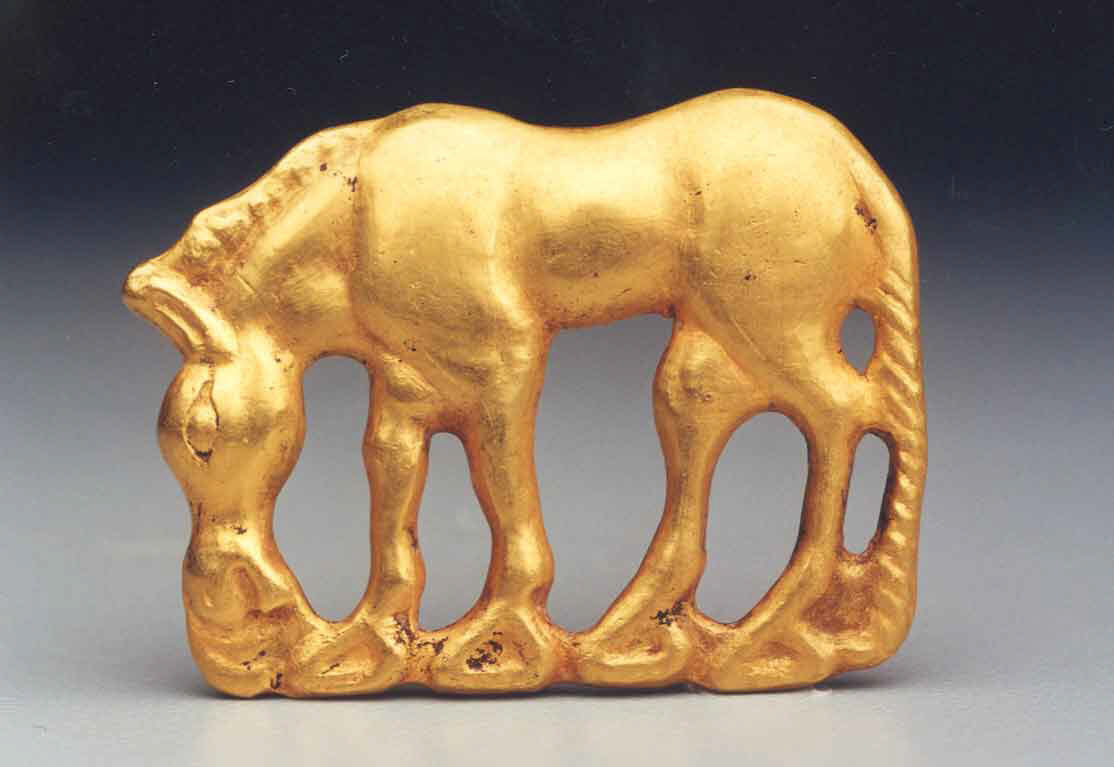
Comparing the Civilizations of Ancient Egypt and Early China
March 2022 | Vol. 10.3
By Marissa Stevens
“Well, you’re just comparing apples to oranges!” has often been shouted during a heated argument as an attempt to invalidate metaphorically the other person’s perspective. But what if comparing apples to oranges was exactly the point? Ancient Egypt and Early China: State, Society, and Culture begins with just such a discussion of those theoretical fruits. While comparing such dissimilar fruits to one another is often met with criticism, the argument is made that it is only by recognizing both the differences and the similarities between these fruits that one can appreciate the distinctive qualities of each and acknowledge the role they both share in balancing the grand food pyramid.
Comparative history is therefore part of a historian’s healthy diet. While scholars have long seen the value of contrasting neighboring civilizations – those who shared direct contact, or at minimum, those who occupied overlapping space on the global timeline – pitting against one another two monolithic cultures separated by both space and time takes comparative methodology far outside academia’s traditional comfort zone. But it is in this unknown territory that the most knowledge is to be gained.

Nile fecundity figure from Medinet Habu. Photo by Marissa Stevens.
Here scholars can liberate themselves from the restraints of hyperspecialization and exceptionalism that so often plague geographically specific fields of study. It is easy to fall into the fallacy of the uniqueness of a particular civilization when that civilization is only ever viewed in isolation, and it is easy to play into narratives of nationalism when one does not take a step back to view the global picture of an interconnected world. Comparative history also allows one to question broad categorical terms such as “art,” “religion,” and “philosophy,” which are often defined from a western perspective.
Finally, comparative approaches encourage scholarship to move beyond descriptive history, instead challenging scholars to delve deeper into the processes, structural functions, and social frameworks that are often institutionally driving factors in the lifecycle of any civilization. The advantage of comparing ancient Egypt and Early China, two civilizations that had no point of contact in time or space, lies precisely in that uncontaminated territory: there is no possibility that one society influenced the other, so any structural similarities that come to light are purely that.

Plaque in the shape of a grazing kulan. Metropolitan Museum of Art 2002.201.118
Focused primarily on New Kingdom Egypt (ca. 1548–1086 BCE) and Han dynasty China (206 BCE–220 CE), Ancient Egypt and Early China showcases the structural similarities and culturally determined differences between these two civilizations. Both societies were in part shaped by the ebb and flow of major rivers. The Nile provided a sense of regularity to many facets of Egyptian life: shaping the agricultural cycle, aiding the movement of materials for large-scale building projects, and even furnishing the framework for much of the Egyptian religious tradition.
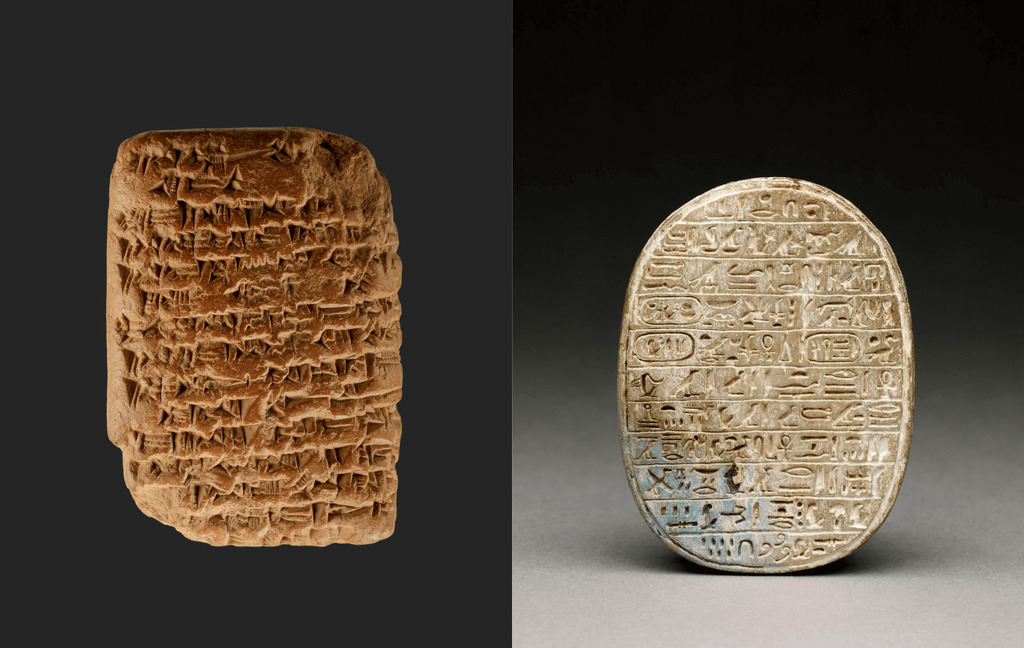
(Left) Amarna letter: Royal letter from Ashur-uballit, the king of Assyria, to the king of Egypt. Metropolitan Museum of Art 24.2.11.
(Right) Commemorative Marriage Scarab of Gilukhepa and Amenhotep III. British Museum 113871. © The Trustees of the British Museum.
The Yellow River, by contrast, provided the Chinese with terrifying irregularity. Unlike the welcomed yearly flooding of the Nile, the Yellow River’s dramatic flooding often caused more harm than good, with catastrophic destruction laying waste to entire villages. Both of these rivers, however, encouraged centralized political systems that could engineer hydraulic systems to regulate their power and drew legitimation from that control of the waters.
Both regimes also shared a common goal of spreading their territorial control and influence over vast areas of land, creating empires that were managed through both warfare and diplomacy. As the kings of Egypt’s New Kingdom commanded troops and traders to extend into the Levant, they encountered neighboring kingdoms such as the Mitanni and the Hittites. Egypt joined their ranks as one of the Great Powers of the ancient Near East. Han China looked towards the nomadic Xiongnu and the territories of the Western Regions to achieve their goals of imperial expansion and trade opportunities, sending envoys to negotiate allegiance to the Han court.
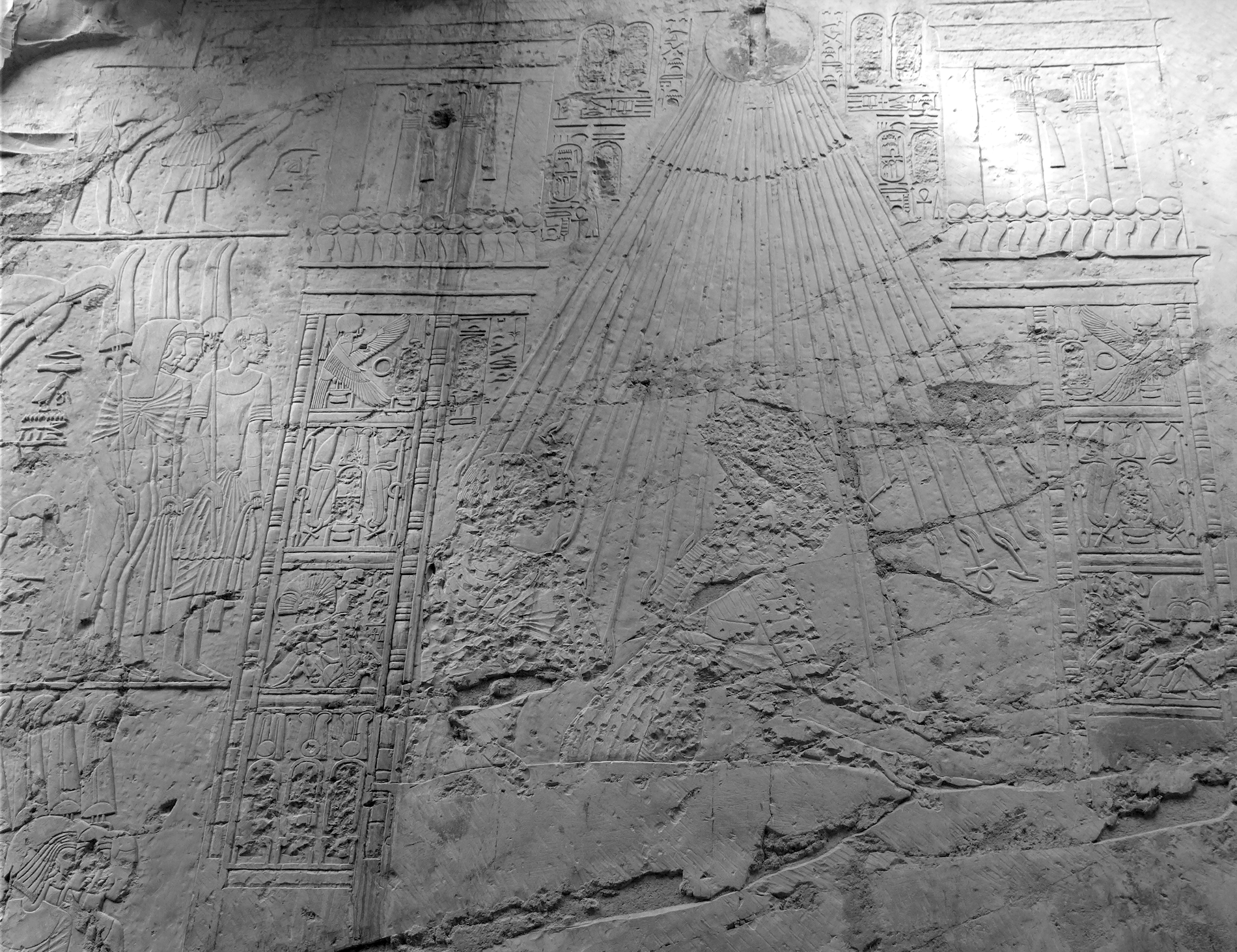
Defaced image of King Akhenaten and Queen Nefertiti, Tomb of Ramose. Photo by Marissa Stevens.
Aggressive warfare was sometimes the preferred option in these situations, but perhaps not the best choice for stable, long-lasting relationships. Diplomacy required time and finesse. With a command of multiple languages and scripts, knowledge of foreign cultures, and the ability to communicate effectively, it was often the scribes of both Egypt and China who served the most vital roles in acts of diplomacy. Correspondence such as the administrative archive of the Amarna Letters reveals the level of nuance and deference that was often needed to communicate: a simple greeting was always more than met the eye. A king of equal stature would be addressed with reciprocity in salutations, while a leader of lesser rank would be addressed with much less sympathy. The scribes of Han China also manipulated the art of language to create a Central Asian empire that consisted of vassal states – areas that were not simply conquered and subservient, but existed (just like Egypt’s empire in the Levant) as peer polities bound together by more than just simple military conquest.
One such method of binding these vassal states was the use of diplomatic marriage as a tool to exert control over other royal families. Both Egypt and China utilized diplomatic marriage, but because of differences in kinship practices and cultural beliefs, the specifics of such arrangements varied widely. The Egyptian kings of the New Kingdom took foreign wives in an act that they viewed as subjugating a foreign royal family to them. After all, is not the act of giving a princess over to be a part of the Egyptian royal harem the ultimate act of tribute and submission? The Egyptians refused to ever reciprocate this act with another power in the Near East. In Han China, however, the situation was reversed. Han princesses were wedded to foreign rulers in an act that the Han emperors did not believe weakened their authority, but rather strengthened it. Having a Han princess in a foreign royal court secured loyal eyes and ears on the ground and opened up the possibility that an heir born of a Han princess might show filial deference in political negotiations towards his grandfather, the emperor of the Han.
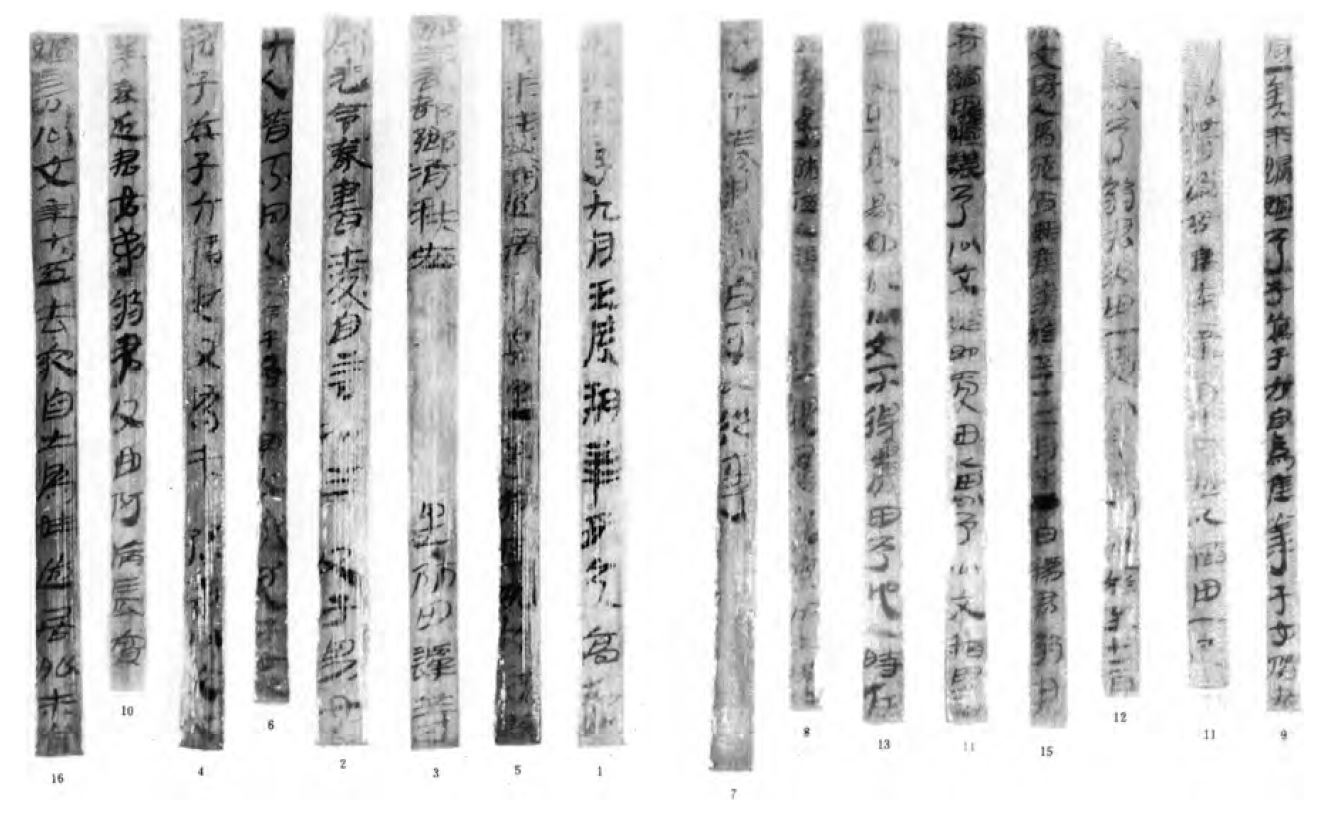
“Will of Zhu Ling and the Old Woman.” After Yangzhou Bowuguan, ed., “Jiangsu Yizheng xupu,” plates 1–2.
With the good fortune of imperial expansion and successful diplomatic and trade missions, an empire can often fall into complacency. This was the fate of both New Kingdom Egypt and Han China. As stagnation set in, two charismatic leaders emerged with radical strategies meant to breathe new life into the decaying giants. The “heretic king” of Egypt, Akhenaten, and the vilified reformer of the Han dynasty, Wang Mang, both utilized economic and religious manipulation to consolidate royal power, truncate the authority of religious and regional leaders, and leverage monetary and commodity systems to support their projects.
A comparison between Egypt and China in the realm of law is also very illuminating. Early China’s judicial system, with its complex written laws and thousands of enforcement agents, was much more proscriptive and proactive than Egypt’s, which operated a more reactive court system which became the last recourse when community forms of mediation and punishment failed. In both, however, we find legal bureaucracies staffed with scribes, who again played a crucial role in the maintenance of law and order.
![The tomb of Shi Rao. Adapted from Lianyungang Shi Bowuguan et al., eds., Yinwan Han mu jiandu, 13, 34, 172, figs. 18, 19, 30, 32, 36, 40.]](https://anetoday.org/wp-content/uploads/2024/06/Stevens_Fig8.jpg)
The tomb of Shi Rao. Adapted from Lianyungang Shi Bowuguan et al., eds., Yinwan Han mu jiandu, 13, 34, 172, figs. 18, 19, 30, 32, 36, 40.]
The unique status of scribes was so important for both civilizations that it is often reflected in the burials of these special individuals. Scribes were buried with the tools of their trade, such as brushes, pens, and writing materials, and others (even kings) who were not professional scribes in this life were also buried with such tools in order to project that level of cultural literacy and control of knowledge in the hereafter.
Both Egypt and China developed complex notions of the afterlife that warranted the inclusion of funerary materials with elaborate and multiple meanings. Tomb models of domestic architecture, transportation, servants, offering bearers, production spaces, and luxury tableaus constituted a “mini empire” for the deceased and served as a means to guarantee the tomb owner access to the spaces and materials they represented. Interred board games like senet and liubo were not just objects of afterlife entertainment, but also a tangible metaphor and talismanic tool for afterlife journeys. Ownership of the board and mastery of the game facilitated access to the afterlife realms of Egypt and China, respectively.
By studying Egypt and China through the multiple viewpoints of hydraulic management, diplomacy and interstate marriage, the reform of ageing empires, law and justice, scribal culture, funerary materiality that defined the dead, and the afterlife metaphors of games, we see the impressive bounty that can be harvested by methodically comparing apples to oranges.
More importantly, such academic forays can allow the reader to reflect on our modern society and global community. What can the Chinese management of waterways and reactions to disastrous flooding that obliterated entire villages teach us about our responses to our own climate crisis? How do ancient (mis)conceptions about the roles of women in diplomatic marriages shed light on how modern societies define and value their own women? For what purposes do modern political leaders champion ideas of reform and “draining the swamp?” Can the Egyptian promise of a better, richer afterlife via the magic of materiality inform us of our own social shortcomings in providing for the dignified existence of our most vulnerable populations? Looking at the past allows us to hold a mirror up to ourselves in an act of revelatory self-awareness that, without a deep knowledge of history, would be otherwise unattainable.
Marissa Stevens is Assistant Director for the Pourdavoud Center for the Study of the Iranian World at UCLA.
How to cite this article
Stevens, M. 2022. “Comparing the Civilizations of Ancient Egypt and Early China.” The Ancient Near East Today 10.3. Accessed at: https://anetoday.org/stevens-egypt-china/.
Want to learn more?
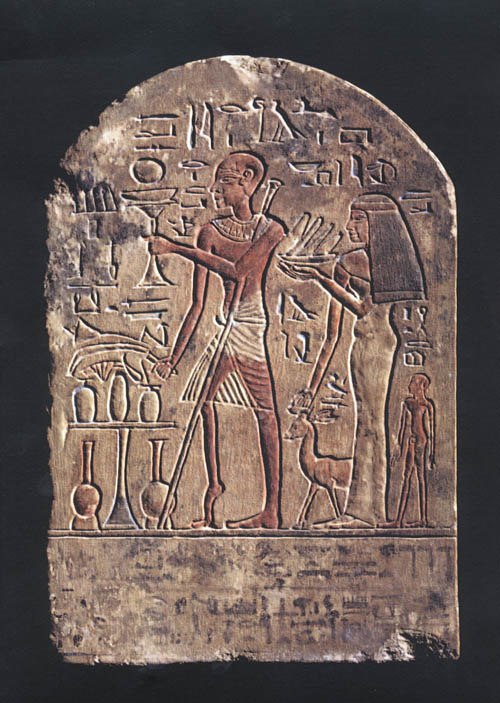

When Is It Ok to Recycle a Coffin? The Rules of the Reuse Game in Ancient Egypt
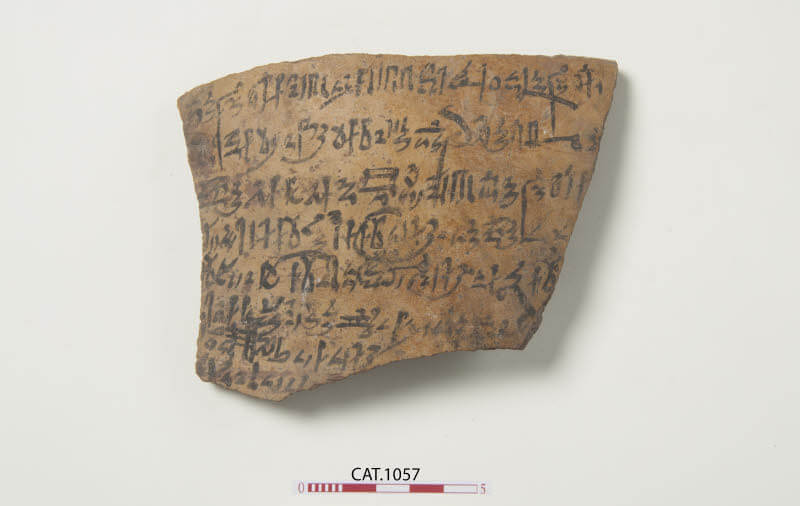
Osiris Must Die – Understanding the Practice of “Menacing the Gods” in Ancient Egyptian Magic
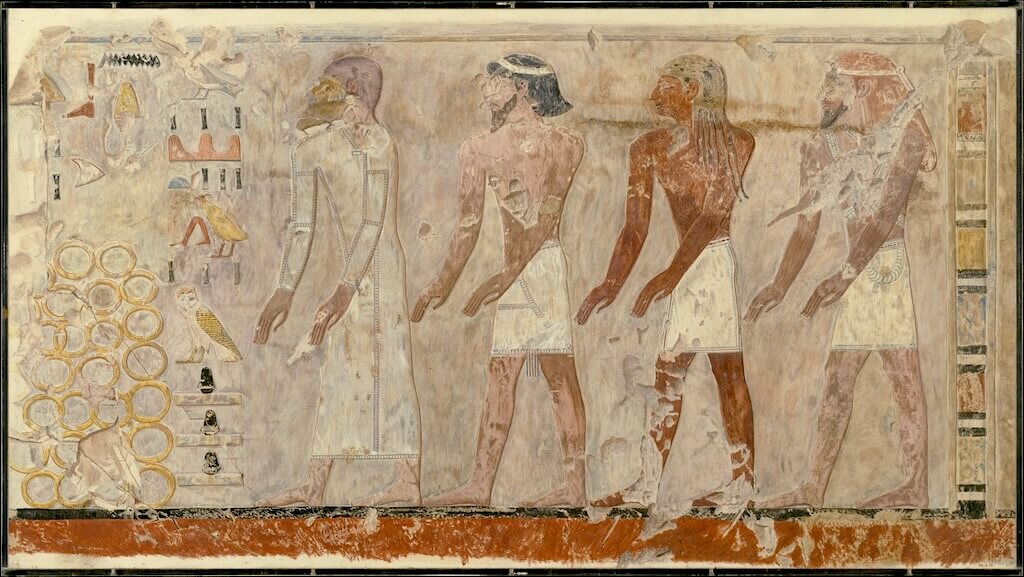

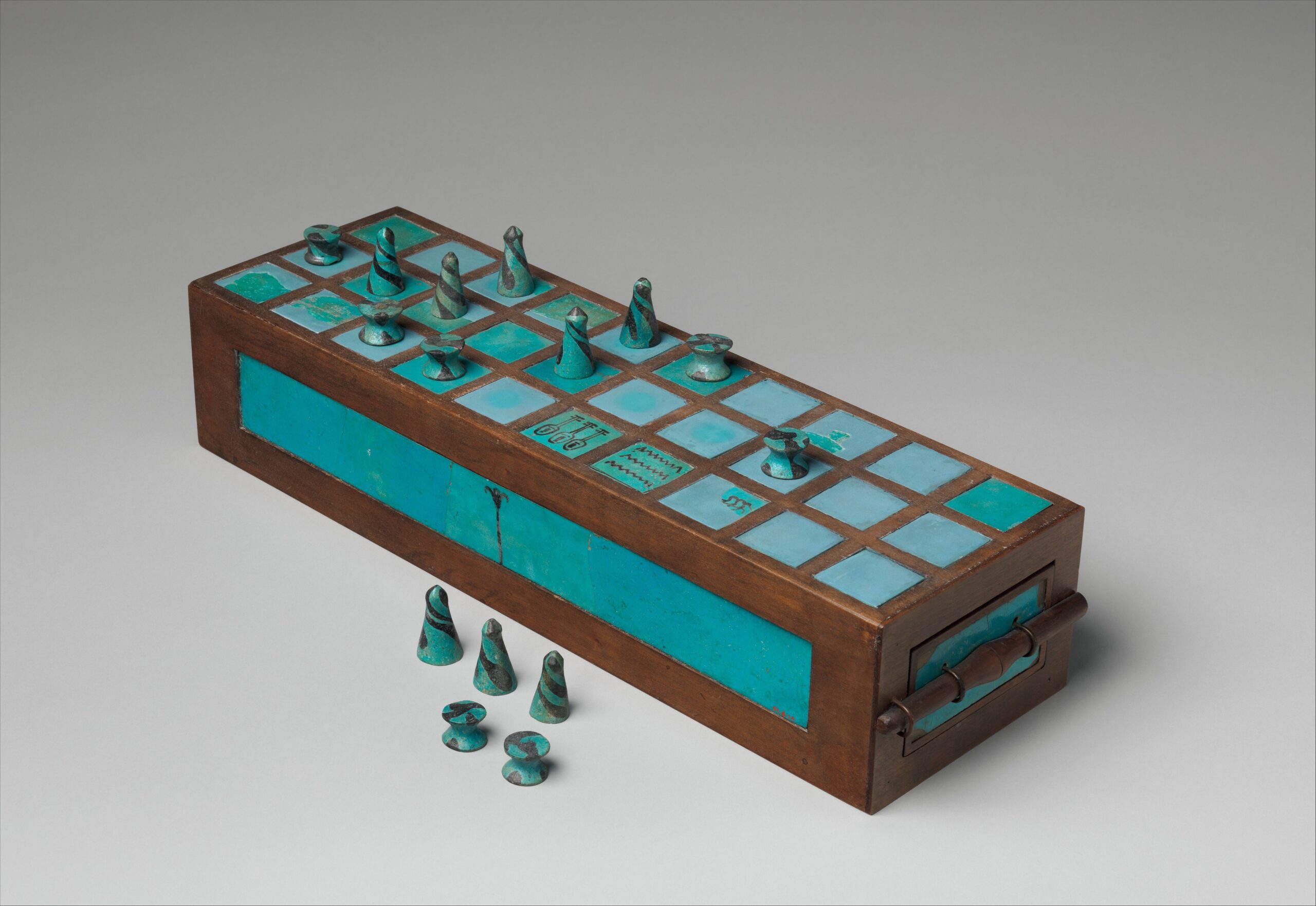
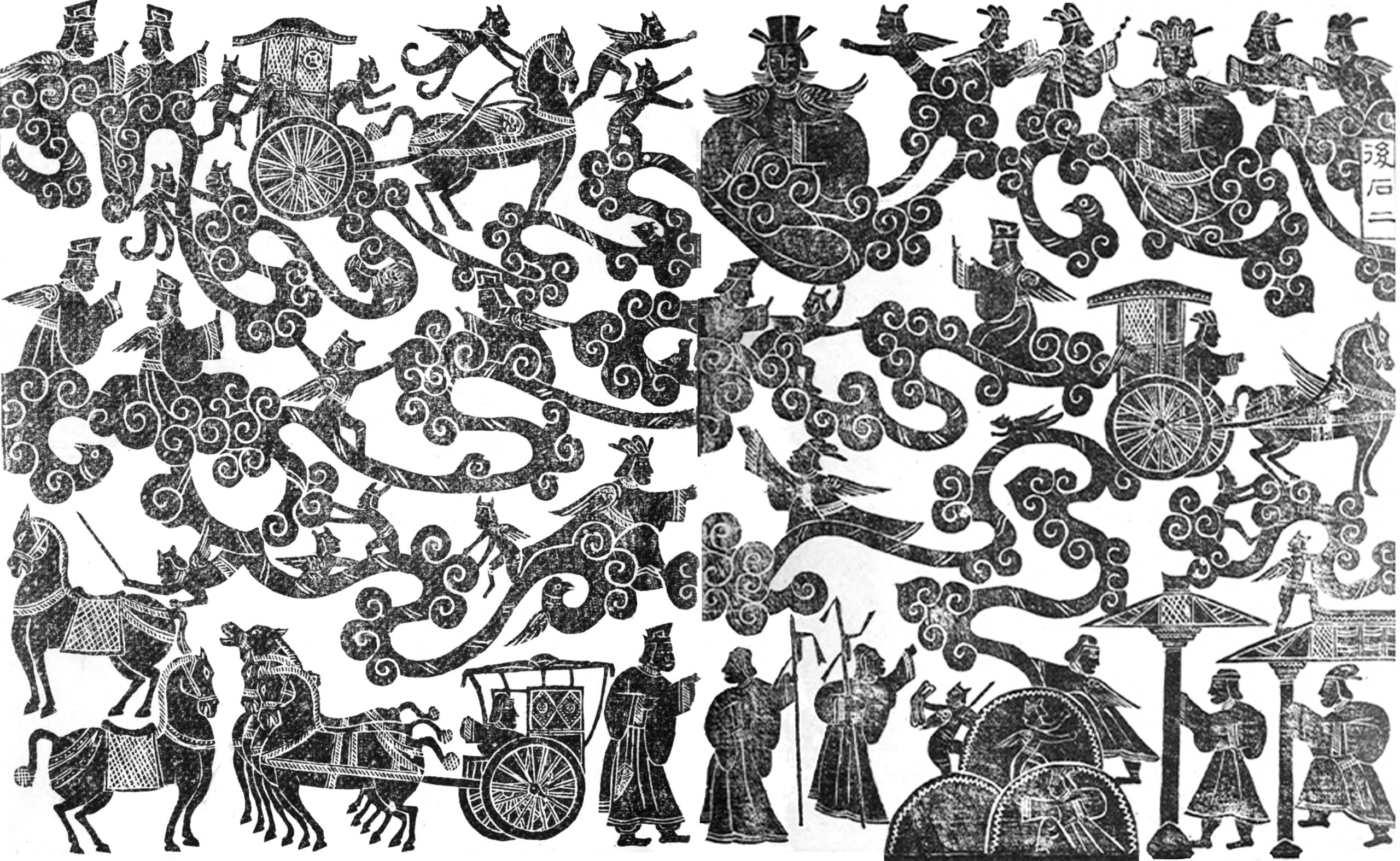
Post a comment